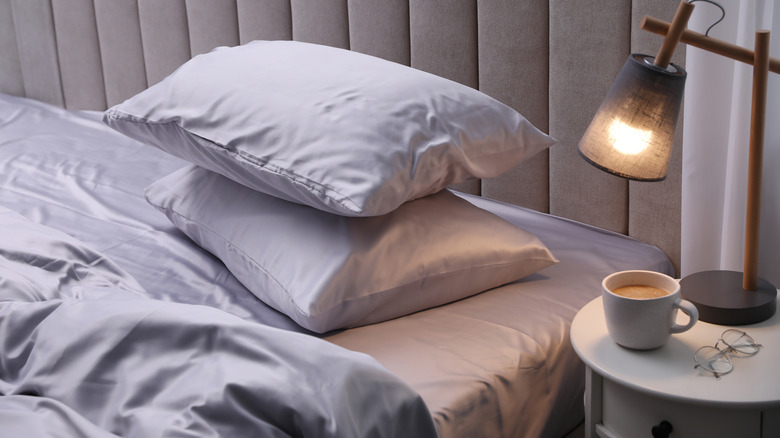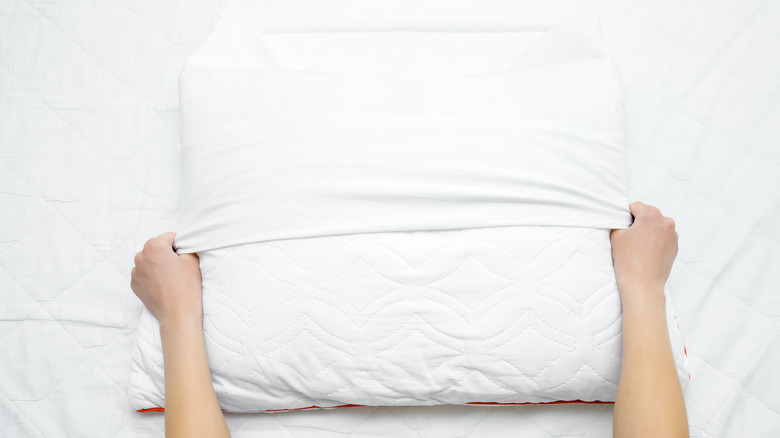This Is What Happens If You Never Wash Your Pillowcases
While you may think of your bedroom as your ultimate nesting place, unfortunately there are creepy crawly critters that consider it their nesting place, too. According to Better Air, everything from our bed, to our curtains, to our bedroom floors are prime spots for germs to thrive — sadly, our pillowcases are no exception.
Research reveals that 99% of people harbor bedroom allergens, Tuck Sleep co-founder Bill Fish told Insider, and some 74% of people have as many as three to six different allergens residing in the bedroom. For these irritants, our pillowcases are prime real estate. "By not taking care of your pillowcase, you are subjecting yourself to particles that can get into your respiratory system and not only trigger an affliction like asthma, but other forms of illness," said Fish.
Moreover, your pillowcase may be to blame if you struggle with acne. The consistent buildup of old makeup, sweat, oil, drool, dead skin cells, and bacteria can wreak havoc on our face (via Bustle). Certified sleep science coach Chris Brantner tells Insider how pillowcases can be a major cause of blackheads, in particular.
However, breakouts are only the tip of the iceberg when it comes to pillowcase-related health issues.
Don't let your pillowcase go unwashed for longer than one week
Unfortunately, all the dead skin that accumulates on an unwashed pillowcase invites in another unwelcome guest. VP of research and development at Microban Dr. Ivan Ong tells Bustle, "Pillowcases pick up dead skin, which dust mites love. An unwashed pillowcase can attract lots of dust mites, which in turn can accentuate issues for asthma and allergic sufferers."
While the idea of face-to-face contact with microscopic critters is gross enough, even more gross is potential exposure to mold and fungus that may be lurking in your pillows. In a 2005 study, researchers from the University of Manchester examined 10 different pillows that had received anywhere from one and a half years of use to 20 years of usage. Every pillow was found to harbor anywhere from four to 16 different fungal species per sample adding up to over a million spores of fungus per pillow — some of which were disease-causing, while other species were the same as what you would find on shower walls.
While it's not possible to do away with dust mites and bacteria in their entirety, the best way to keep our pillowcases clean and sanitary is to make sure they're undergoing regular washings. Bill Fish of Tuck Sleep advises via Insider that pillowcases be washed once a week or more with water heated over 130 degrees Fahrenheit to help do away with as many dust mites and bacteria as possible.


